Scientific name Bergenia Rank Genus | ||
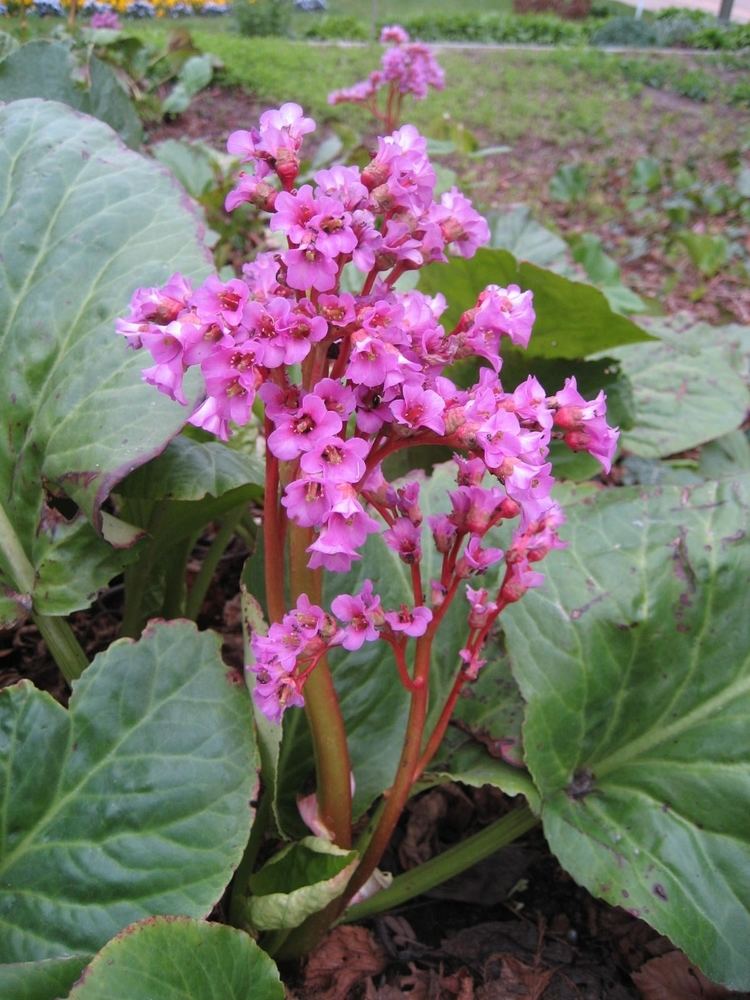 | ||
Lower classifications Siberian‑tea, Bergenia ligulata, Bergenia purpurascens | ||
Spring perennials series bergenia and caltha
Bergenia /bərˈɡɛniə/ (elephant-eared saxifrage, elephant's ears) is a genus of ten species of flowering plants in the family Saxifragaceae, native to central Asia, from Afghanistan to China and the Himalayan region.
Contents
- Spring perennials series bergenia and caltha
- Bergenia crassifolia winter blooming bergenia
- Description
- Species
- Cultivation
- Pests and diseases
- Uses
- References
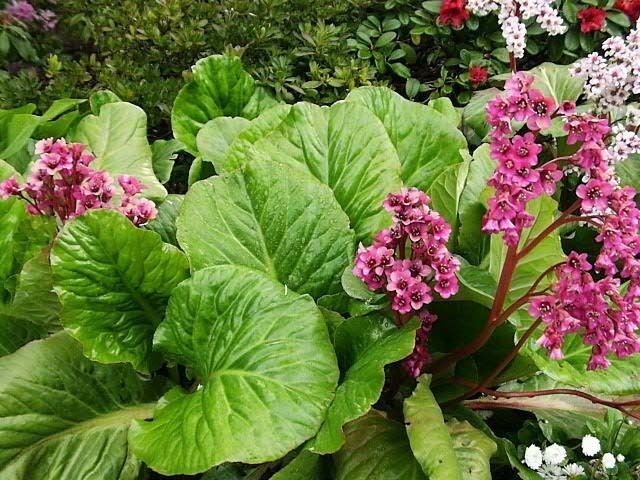
Bergenia crassifolia winter blooming bergenia
Description
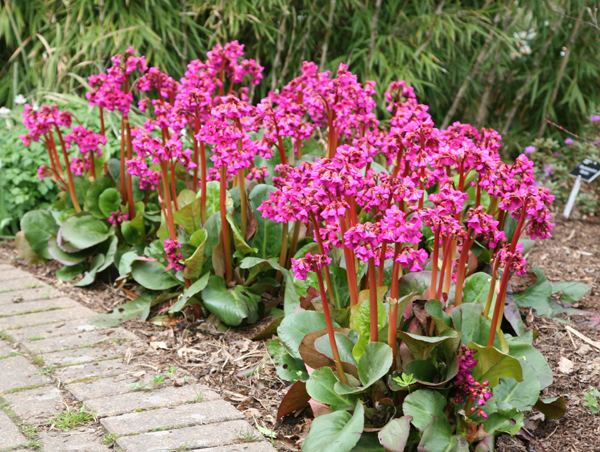
They are clump-forming, rhizomatous, evergreen perennials with a spirally arranged rosette of leaves 6–35 cm long and 4–15 cm broad, and pink flowers produced in a cyme. The leaves are large, leathery, ovate or cordate, and often have wavy or saw-toothed edges. For most of the year, the leaves have a glossy green colour, but in cooler climates, they turn red or bronze in the fall. The flowers grow on a stem similar in colour to a rhubarb stalk and most varieties have cone-shaped flowers in varying shades of pink. These can range from almost white to ruby red and purple.

The common names for Bergenia are pigsqueak (due to the sound produced when two leaves are rubbed together), elephant's ears (due to the shape of the leaves) and large rockfoil.
Bergenia is closely related to Mukdenia, Oresitrophe Astilboides and Rodgersia.
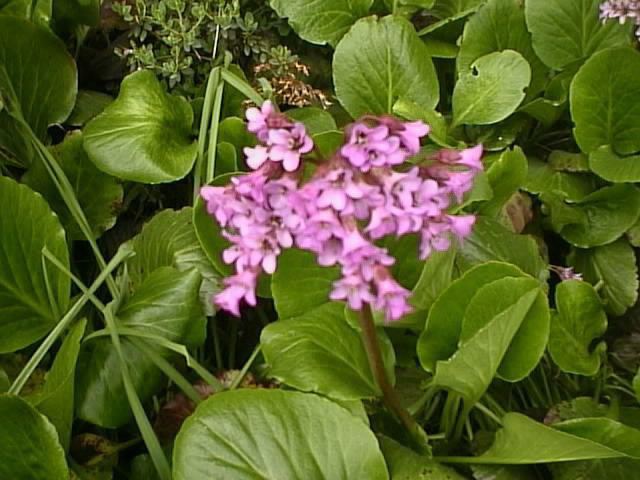
The creator of the taxonomic genus name, Conrad Moench, honoured the German botanist and physician Karl August von Bergen by coining the name Bergenia in 1794.
Species
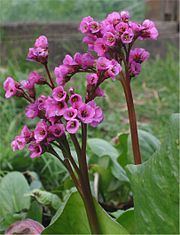
Bergenia crassifolia is about 12 inches tall. The leaves are spoon-shaped. One cultivar is Bergenia crassifolia 'Autumn Red.'
Cultivation
Bergenia are hardy plants that can grow in climates with extreme temperature ranges from about −35 °F (−37 °C) to 115 °F (46 °C). They prefer sun but will grow in shady areas as well. Plants can grow to about 24 in (61 cm) tall and 24 in (61 cm) wide. They do well in most soils, but moist, humus-rich soil is preferable. Exposure and dry soils tend to stunt growth, but can enhance the winter leaf colours. In areas with cold, strong winter winds, protection from the wind may be required. They are propagated by division or rooted rhizome sections.
Bergenia crassifolia, Bergenia cordifolia, and various hybrids are often grown in gardens, with several cultivars selected.
Available in the garden trade are (those marked agm have gained the Royal Horticultural Society's Award of Garden Merit):-
Pests and diseases
Bergenia are robust plants and generally free of problems, although vine weevil adults readily eat the edges of the leaves, resulting in an indented, 'notched' outline which can detract from the appearance of the plant.
Uses
Bergenin, C-glycoside of 4-O-methyl gallic acid, and its O-demethylated derivative norbergenin, are chemical compounds and drugs of Ayurveda, commonly known as Paashaanbhed. They can be isolated from Bergenia ciliata and Bergenia ligulata and from rhizomes of Bergenia stracheyi. It shows a potent immunomodulatory effect.
